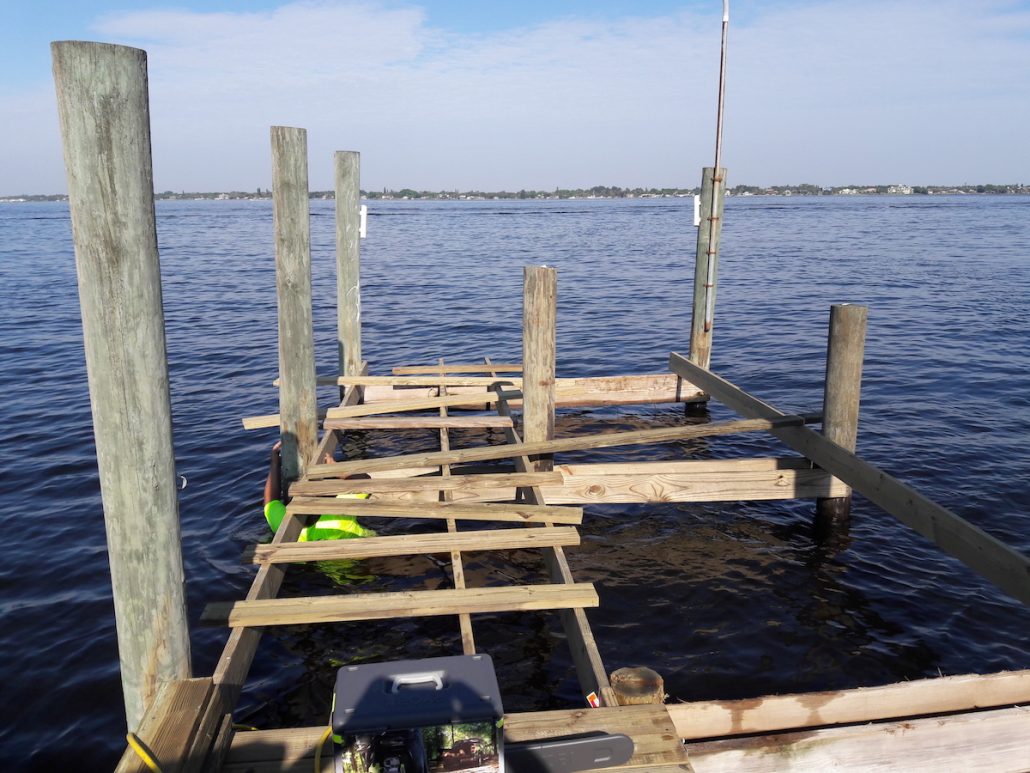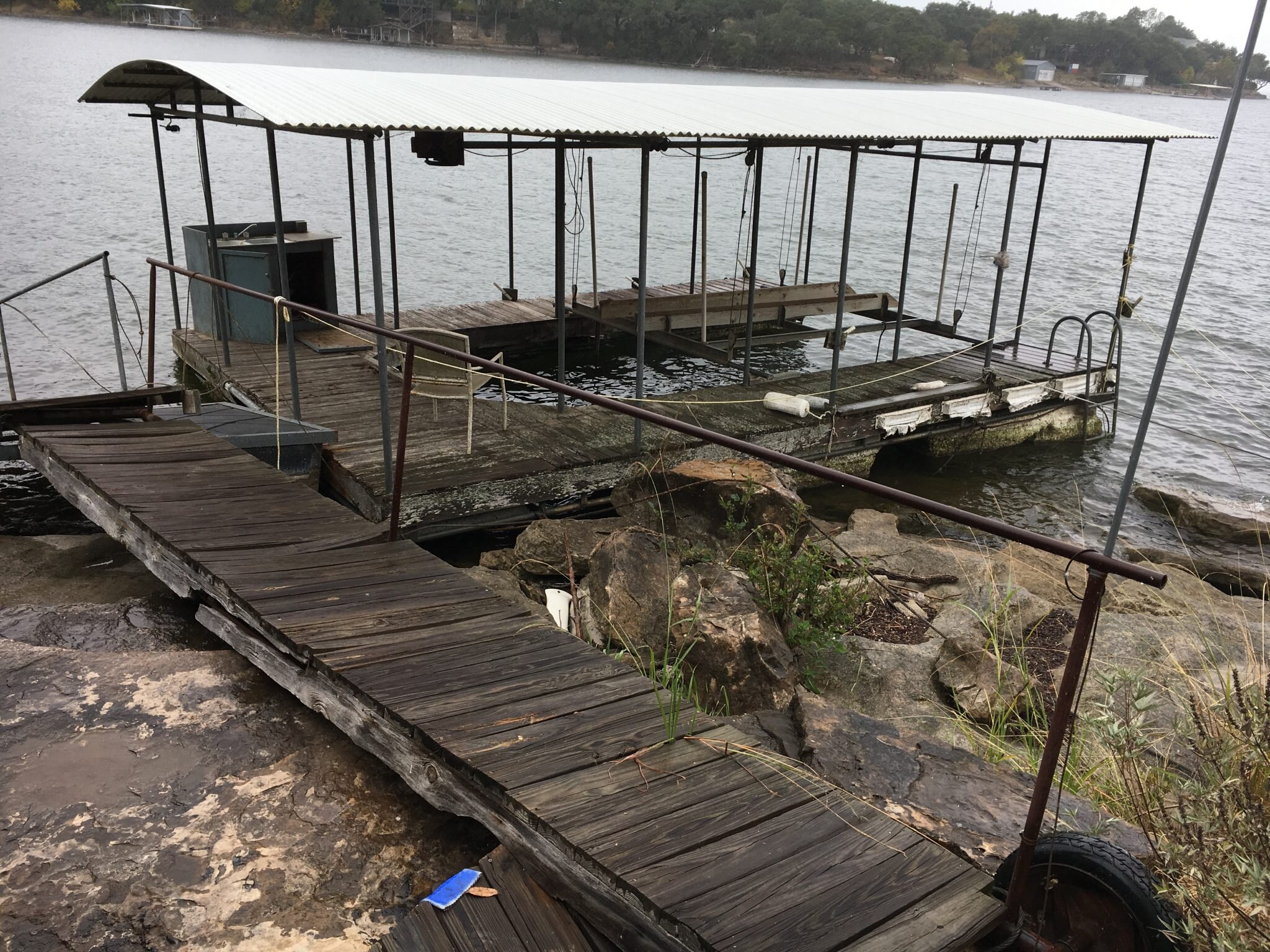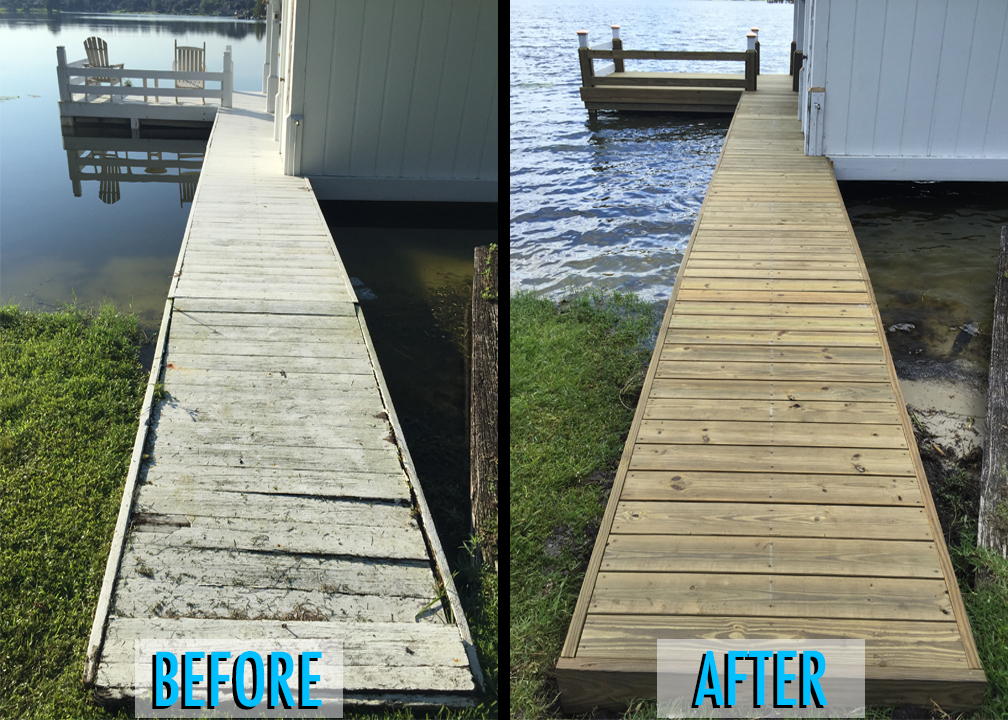Reliable Dock Repair Work Techniques: Guaranteeing Architectural Stability
Making sure the structural stability of docks with reliable fixing techniques is extremely important for the longevity and security of aquatic facilities. This entails a multi-faceted approach starting with comprehensive assessments using advanced modern technologies like sonar devices and from another location operated lorries (ROVs) to spot both visible and hid damages. Consequently, selecting the ideal repair service materials, such as corrosion-resistant alloys and composite products, is critical for sturdiness. Architectural reinforcement methods, consisting of the implementation of cross-bracing systems and load-distribution plates, play a crucial duty in mitigating stress and anxiety factors. Nevertheless, the value of these methods comes to be noticeable when discovering sophisticated repair work approaches and preventative maintenance methods.
Examining Dock Damages
Assessing dock damage is an important initial step in ensuring the architectural honesty and safety of any docking facility. Key elements to take a look at include the dock's foundation, pilings, outdoor decking, and hardware (Dock Repairs).
Structural engineers or qualified assessors generally carry out these analyses making use of specialized strategies and devices. For example, undersea assessments may utilize sonar tools or from another location operated cars (ROVs) to identify immersed damage. Over water, aesthetic inspections are matched by utilizing dampness meters and other analysis tools to reveal underlying problems not promptly noticeable to the nude eye.

Picking Repair Work Materials
Choosing the ideal fixing materials is a crucial step in the dock restoration procedure, one that straight influences the durability and efficiency of the fixed structure. Material option should be driven by aspects such as environmental conditions, load-bearing demands, and compatibility with existing dock parts. For example, timber is a conventional choice for docks due to its all-natural durability and visual charm. Nevertheless, choosing the ideal kind of wood, such as pressure-treated lumber or naturally rot-resistant varieties like cedar or teak wood, is essential to withstand marine environments.
Along with wood, composite products are progressively prominent because of their longevity and low upkeep requirements. Composites, generally made from a mix of plastic and timber fibers, supply outstanding resistance to rot, bugs, and UV damage. For metal docks, selecting corrosion-resistant alloys such as galvanized steel or marine-grade light weight aluminum is vital to stop corrosion and ensure architectural integrity in saline water conditions.
Epoxy resins and marine-grade sealers are essential for fixing fractures and sealing joints, offering a water resistant barrier and improving the dock's total stamina. By thoroughly picking high-quality materials, dock fixings can achieve durable results, thus protecting against future degradation and ensuring safe, reputable usage.
Architectural Support Strategies
Efficient architectural reinforcement techniques are essential in ensuring the security and durability of dock repair work. This method is specifically effective for anchors revealed to hefty loads or harsh environmental conditions.
One more necessary technique is the application of fiber-reinforced polymers (FRP) These my website products supply high strength-to-weight proportions and outstanding resistance to deterioration, making them excellent for enhancing wooden or concrete docks. FRP can be applied in strips or sheets and bonded with epoxy resins to improve architectural stability.
Supporting and securing systems likewise play a crucial function in architectural support. Cross-bracing, using steel or wood beam of lights, can neutralize side forces, decreasing persuading and motion. Securing systems, such as helical piers or driven heaps, provide a secure structure by moving tons to deeper, more secure dirt layers.
Finally, the integration of load-distribution plates can assist disperse weight much more equally across the dock's surface area, mitigating local stress factors. These strategies jointly guarantee that docks continue to be durable and secure, with the ability of withstanding the rigors of their operational environment.
Advanced Fixing Methods

One more advanced method entails undersea welding, which permits for repair services to be performed without the demand to dewater the area. This approach is particularly advantageous for resolving structural concerns in submerged dock elements, guaranteeing very little disturbance to procedures. Boosted welding strategies, paired with robot systems, supply precision and dependability, thus prolonging the life expectancy of the dock.
Additionally, cathodic security systems are executed to stop rust in metal dock structures. By utilizing sacrificial anodes or pleased existing systems, these strategies properly mitigate the electrochemical processes that result in material degeneration.
Last but not least, progressed tracking innovations, such as structural health surveillance (SHM) systems, supply real-time information on the problem of dock structures. These systems allow proactive maintenance and prompt interventions, ultimately guaranteeing the lasting architectural stability of the dock.
Upkeep and Prevention
Maintenance and avoidance are fundamental principles that underpin the longevity and safety and security of dock structures. Routine examinations are extremely important, enabling early discovery of deterioration, potential weaknesses, and environmental effects. A positive strategy, including regular look for corrosion, rot, and architectural shifts, mitigates costly repair work and extends the dock's operational life.
Precautionary actions ought to include using protective layers to metal parts to guard versus rust and using treated wood to stand up to decay. Additionally, guaranteeing correct drain and ventilation can avoid water buildup, which is a typical source of structural deterioration. Including top quality materials and adhering to supplier standards throughout construction and fixing stages additionally play critical duties in improving sturdiness.

Training workers in dock maintenance best methods guarantees consistent application of safety nets. Leveraging technological breakthroughs, such as drones for assessments and sensors for real-time surveillance, can further boost upkeep initiatives. By prioritizing upkeep and prevention, dock proprietors can make sure architectural integrity, operational safety and security, and cost-efficient administration over the dock's lifespan.
Verdict
In final thought, preserving the structural stability of aquatic facilities demands detailed dock repair methods. Comprehensive examinations utilizing sophisticated tools uncover both visible and concealed problems, while the option of appropriate fixing products boosts longevity. Implementing structural support methods addresses stress factors successfully. Advanced repair service strategies, coupled with routine upkeep methods, make certain the dock stays functional and risk-free under diverse ecological problems. Adopting these approaches substantially prolongs the life expectancy and functionality of marine facilities.
Ensuring the architectural honesty of docks with reliable repair service strategies is paramount for the longevity and security of aquatic centers.Choosing the appropriate repair materials is a critical step in the dock reconstruction process, one that straight affects the long life and efficiency of the repaired structure.Reliable architectural support strategies are vital in guaranteeing the stability and durability of dock repairs. By focusing on view upkeep and prevention, dock owners can ensure architectural honesty, operational safety and security, and economical management over the dock's lifespan.
In verdict, maintaining the architectural honesty of marine facilities necessitates extensive dock fixing strategies.